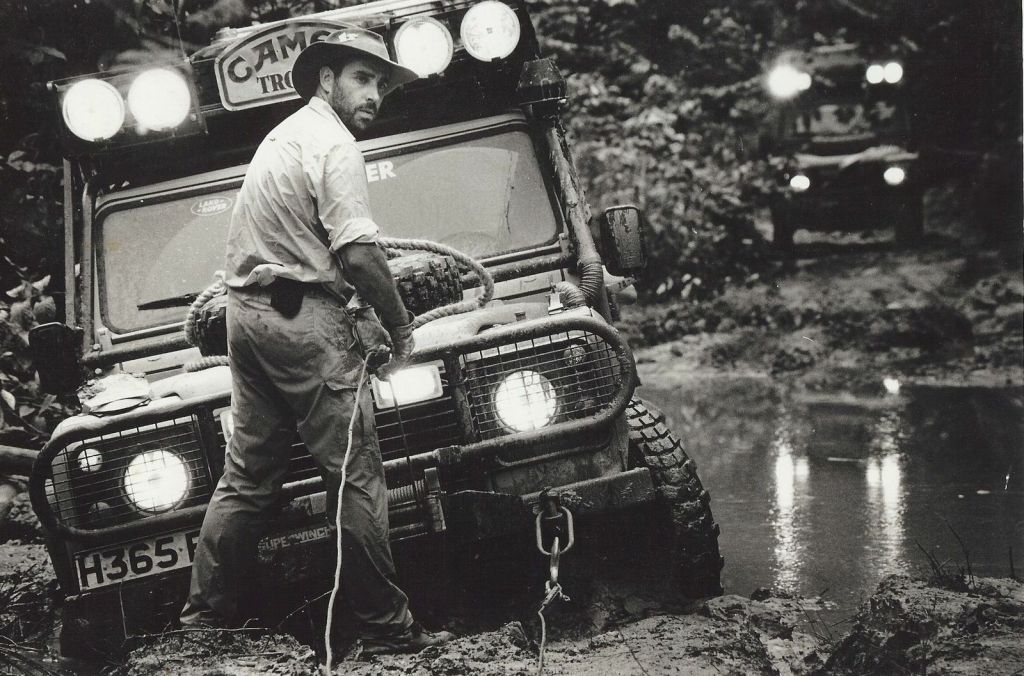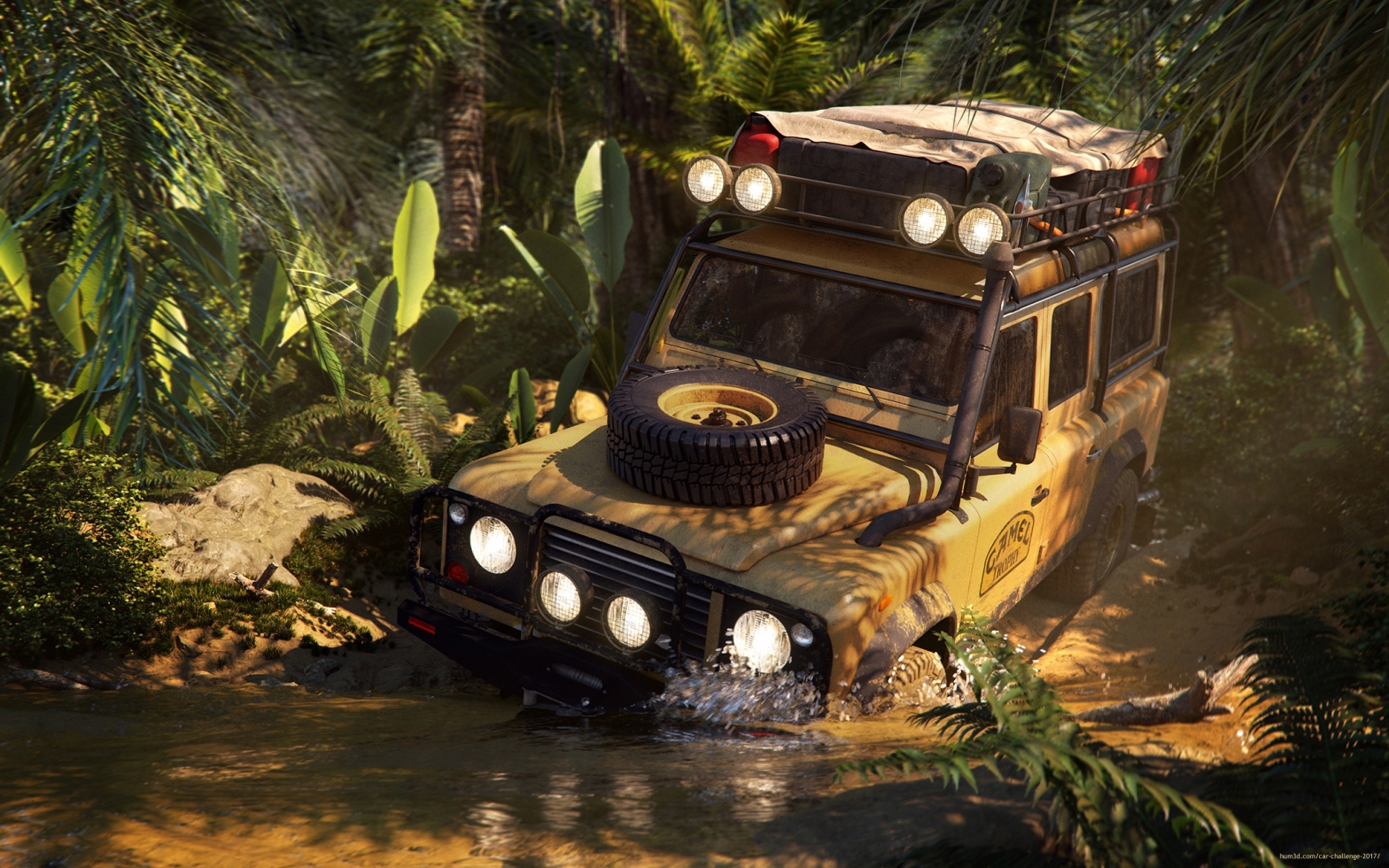Top photo courtesy of Jochem Aarts. http://www.realizm.nl
The year was 1984, I was coming back home from downtown by bus and on my hands I had something very important, well, it was very important to me anyway, it was the latest issue of the most popular auto magazine in Brazil: “Quatro Rodas” (Four Wheels). As a centerfold of that magazine there was an application for the 1985 edition of the Camel Trophy, the biggest off-road event on the planet.
Obviously I put my name on that form and sent it out by mail, even if I have no chances whatsoever to be chosen. I was just a teenager with no drivers license going against thousands of skilled adventure seekers; all I wanted was, to somehow, be part of it.
1985 was a special year for us, for the first time a Brazilian team was invited to participate, even if the Camel Trophy has deep roots in Brazil from the very beginning.
The event was born as a piece of publicity for the cigarette brand Camel. The tobacco companies around the world came to the conclusion, during the 1970s, their product was losing its appeal to the younger generation. Just like any other tobacco company, R.J. Reynolds, the owner of Camel, was desperately looking for something that could bring the young buyers back.

The marketing department of Camel in Germany decided to once again take advantage of the traditional link between smoke/booze and motorsport and they came up with this idea of an Off-Road adventure, in some forgotten corner of the world, where man and machine would overcome all the challenges of the inhospitable terrain.

The first Trophy happened in Brazil, six selected Camel customers were sent to the Amazon Jungle and there they were divided in 3 teams, a driver and a navigator, the task was to cover 1600 Km through the jungle driving on the “Transamazônica” Hwy. To keep the costs as low as possible, the vehicle should be supplied locally, the problem was: at that time, the Brazilian auto market didn’t have access to import cars and the only reasonable off-road vehicle was the “classic” Jeep CJ, produced in Brazil by Ford. The car was equipped with the well known 2.3 liters 4 cylinder Ford engine. The CJs were painted in “Sand Yellow” with the “Camel Trophy” stickers applied on doors and hoods, a very simple livery that became as iconic as any other in motorsport.
At some point of the journey one of the Jeeps caught on fire, the team had one “Jerry can” full of gas strapped on the hood and somehow it leaked and the gas poured on top of the engine, igniting the flames, thankfully nobody got hurt. Besides the accident, the event was a success, the teams performed well and so did the CJs. The Camel Trophy made the headlines in Germany and R.J. Reynolds CEOs were happy.

For the next year, the “Trophy” adopted the off-road vehicle that became synonymous of the event and after a while, it completely overshadowed the “Camel” name brand: “Land Rover”. In 1981, 10 Germans were sent to Sumatra and the chosen vehicle was the V8 powered Range Rover.

At this time the Camel Trophy made headlines not only in Germany but all over the world. The R.J. Reynolds CEOs at the American Headquarters noticed the publicity and they saw the event as a wonderful opportunity to make the brand known worldwide.
Thousands of applications poured in for the next adventure and now there were 4 countries participating with 2 teams each: Holland, Germany, Italy and the United States. Thanks to the excellent performance of the V8 Range Rovers in Sumatra the Camel Trophy didn’t see the need to try other models. In the end, the Italians won the 1982 edition.
As the Camel Trophy was getting bigger and more famous after each edition, the challenges of the adventure grew larger as well, now the teams had to face stretches of thejungle where the path was definitely not intended for motor cars and some stretches had no open path at all. The competitors had not only to fight many horrors of the “road” but also clouds of mosquitos, poisonous snakes, alligators, sleep deprivation, and less than great food.

After 1980, the candidates were selected not only by their resumes but they have to face a week of tests in a “boot camp” were the final members of the teams were chosen.

In the 1980s, the average duration of each event was around 2 weeks to cover 1500Km and it followed the rules of the “regularity rally”, also called time-speed-distance or TSD rally, which is a type of motorsport rally with the object of driving each segment of a Course in a specified time at a specified average speed.

Despite the event being a “competition”, there was a huge sense of camaraderie between the teams, no man, or Rover should be left behind.
In 1985 The Camel Trophy had 16 teams classified for the event, with 3 rookies countries: Japan, Brazil and Canary Islands. The teams were sent to Borneo to face the hardest Trophy to date.

At some point of the trip, the complete convoy of Land Rover Ninetys became marooned on a low rise within the flooded forest ahead, without any chance of moving forward, the teams had to be airlifted using an old Sikorsky helicopter from the local government.
In 1985 we saw the introduction of the “Team Spirit Award”, presented to the team who embraced the most the fellowship and camaraderie of the event. The first Team Spirit prize was awarded to the likeable Brazilian team of Carlos Probst and Tito Rosenberg.

In 1989 the Trophy was once again back in Brazil and more than one million would-be explorers around the world applied for the adventure. In terms of advertising both companies, Camel and Land Rover, have achieved beyond their goals and for the adventure junkies around the globe, the Camel Trophy motto: “One life, live it” would be forever remembered.
The camel Trophy also helped to bring countries together, the 1990 event was held in Siberia and the Soviet government was strongly committed to cooperate. The Air Force sent 4 massive Antonov cargo planes to airlift 34 land Rovers (23 competitors and 11 support cars) plus all the spare parts, tools and clothing from England to Russia.

During its 20 years, the Camel Trophy went to all corners of the planet, South America, Asia, Africa and since most of the visited countries were (and still are) poor, the organization didn’t forget the social part; R.J. Reynolds and Land Rover in association with many ONGs brought to the local communities food, supplies, medical assistance. They helped either building or repairing schools, bridges, and roads. In Africa, many Land Rovers were given away to National Parks.

Land Rover had the opportunity to test every product in its line-up during those years. It was only on the last event, in 2000 that another brand was allowed to participate.
Toward the end of the 1990s, the event started to focus more on some parallels activities like mountain biking, climbing, and canoeing, putting aside the old school off-road exploring and slowly the popular interest for the event started to fade.
The End

The 2000 edition of the Camel Trophy was the last one and it diverted completely from the original mold, the traditional alliance with Land Rover was broken and Honda supplied 20 CRVs for the event, and even more strange was the fact the cars were no longer the main vehicles, but boats. The idea was to explore a few islands in the Pacific Ocean, between Vavu’a in Northern Tonga and finishing at Malolo Lailai in Fiji, covering some 1,000 nautical miles. In terms of adventure, the 2000 edition was amazing, but for the traditional “gearheads” the Camel Trophy had lost its magic.
One of the main factors that contributed to the end of the Camel Trophy was that sports teams and events sponsored by “controversial” products like alcohol and tobacco came under severe criticism at the time.
The G4 Challenge

In 2004 Land Rover tried to revive the old Camel trophy vibe with the G4 Challenge. This new adventure followed the same core as the “Trophy” but the length of each event was way longer, crossing different countries on different continents, over the course of a month. In order to detach the G4 from the Camel Trophy, the cars were painted in bright orange. Land Rover canceled the program in 2008, victim of the global financial crisis.
The Casual Hero

Back in the 80s surf became a fever in Brazil, after all, the country has 7500 Km of coastline and Tito Rosenberg as a surfer and photographer was a familiar face on the pages of the surf magazines. By the time when he was chosen to part of the Brazilian team to the 1985 edition of the Camel Trophy, he had already traveled around the world in search of the perfect wave and the perfect photo.

Tito came back home not only with the honor of being part of the first Brazilian team at the Trophy but he and Probst won the “Team Spirit Award”. I immediately eleveted him to the same level of my other heroes, like Emerson Fittipaldi and Nelson Piquet. The Camel Trophy was never meant for the professional race/rally drivers, it was an amazing event meant for the amateurs and Tito epitomized the image of the typical Trophy contender: an easy going, adventure seeker, always ready to help you.

He wrote a book about his 1985 adventure in Borneo.

I have certainly enjoyed this series. I have gained knowledge and will look forward to future segments.
LikeLiked by 1 person
Thanks George, I am glad you have enjoyed my posts.
LikeLike
Another great read! Keep it up, they are very interesting.
LikeLiked by 1 person
Thanks a lot, Clint. Your opinion is very important to me.
LikeLike
Nice to see my 3d render at the top of the post. Would even be better to be credited for it 😉
I made that visual as a tribute to the “Olympics of 4×4 adventure. Have a look at: http://www.realizm.nl/portfolio/camel-trophy-defender/
LikeLike
I am sorry for that, please tell me the best way to credit your photo and I will do it.
LikeLike